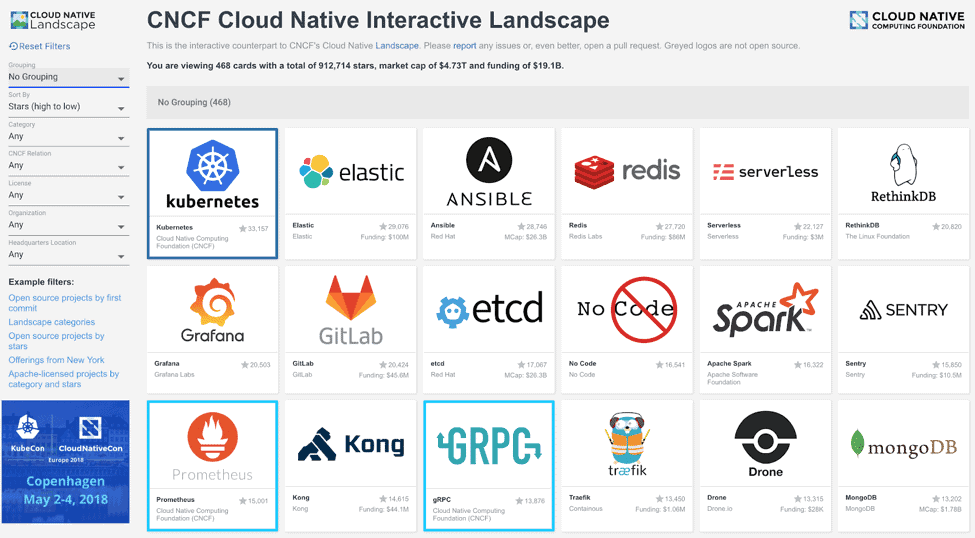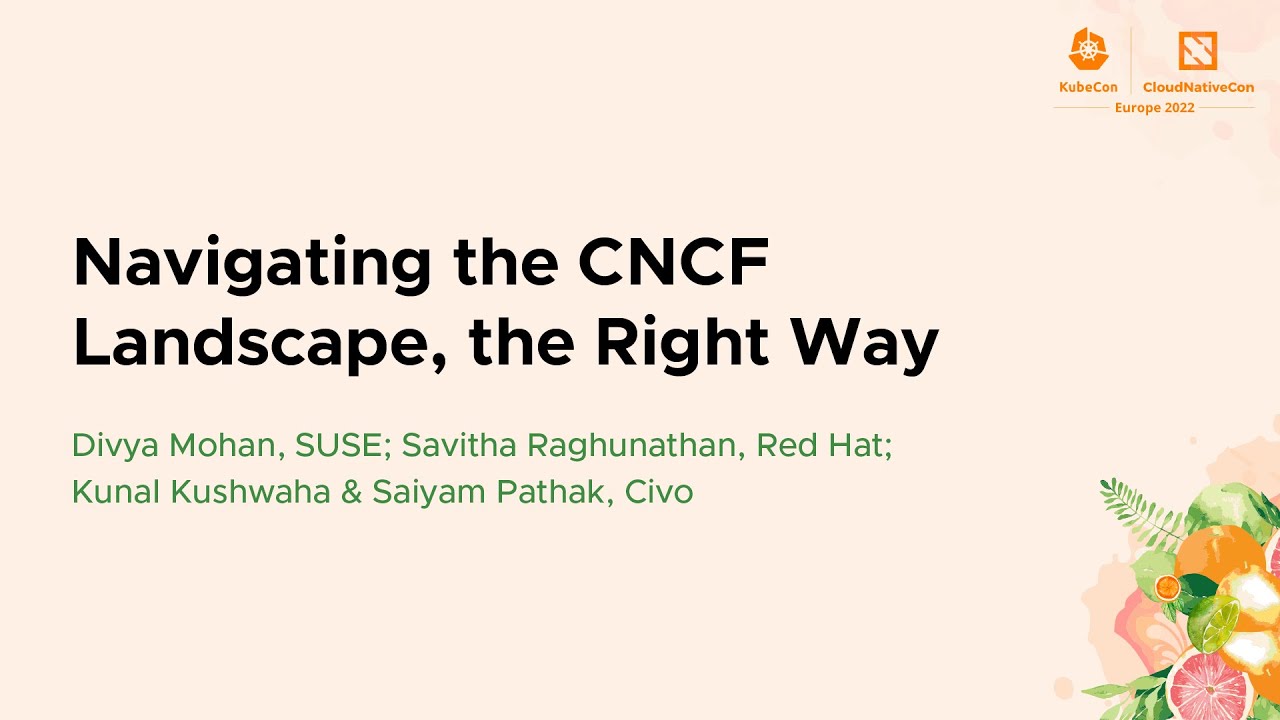CNCF Landscape - Secure Cloud Native Applications And Infrastructure
The Cloud Native Computing Foundation CNCF Landscape is a project that provides a visual representation of the cloud native ecosystem. It is an interactive visualization that provides a comprehensive overview of the various cloud native technologies, projects, and platforms that are available for organizations to modernize their applications and infrastructure.
Author:Xander OddityReviewer:Dr. Felix ChaosphereMar 15, 202332 Shares608 Views

The Cloud Native Computing Foundation CNCF Landscapeis a project that provides a visual representation of the cloud native ecosystem.
It is an interactive visualization that provides a comprehensive overview of the various cloud native technologies, projects, and platforms that are available for organizations to modernize their applications and infrastructure.
The CNCF Landscape is hosted on GitHub and is maintained by the CNCF, a nonprofit organization that helps to advance the development and adoption of cloud native technologies. The project is regularly updated to reflect the latest developments and trends in the cloud native space.
The CNCF Landscape is part of the CNCF's broader mission to promote the adoption of cloud native technologies and practices. The CNCF also provides certification programs, events, and community engagement initiatives to support this mission.
CNCF Landscape Categories
The CNCF Landscape is organized into different categories, each representing a different aspect of the cloud native ecosystem. The categories include:
- Container orchestration - This category includes container orchestration platforms such as Kubernetes, Docker Swarm, and Mesos. Container orchestration platforms help to manage the deployment, scaling, and management of containerized applications.
- Service mesh - This category includes service mesh solutions such as Istio, Linkerd, and Envoy. Service meshes help to manage the communication between different services and microservices within a cloud native application.
- Observability and analysis -This category includes monitoring and analytics tools such as Prometheus, Grafana, and Jaeger. These tools help to provide visibility into the performance and health of cloud native applications.
- Continuous integration and delivery -This category includes tools for continuous integration and delivery such as Jenkins, CircleCI, and GitLab. These tools help to automate the build, test, and deployment of cloud native applications.
- Storage and databases -This category includes storage and database solutions such as Kubernetes-native storage, CockroachDB, and Vitess. These solutions help to manage the storage and retrieval of data within cloud native applications.
- Networking - This category includes networking solutions such as Calico, Cilium, and Flannel. These solutions help to manage the network traffic and communication between different components within a cloud native application.
- Serverless -This category includes serverless platforms such as OpenFaaS, Knative, and AWS Lambda. Serverless platforms provide a way to run applications without the need to manage underlying infrastructure.
- Security -This category includes security solutions such as Vault, Twistlock, and Sysdig. These solutions help to secure cloud native applications and infrastructure.
- Runtime -This category includes runtime platforms such as Cloud Foundry, OpenShift, and Fission. Runtime platforms provide an environment for running cloud native applications.
Each category in the CNCF Landscape is represented by a different color, and users can hover over each node to see additional information about the technology or platform. The CNCF Landscape also includes links to the relevant GitHub repositories, websites, and documentation for each project or technology.

Navigating the CNCF Landscape, the Right Way - D. Mohan, S. Raghunathan, K. Kushwaha & S. Pathak
CNCF Landscape Updates And Contributors
The CNCF Landscape is regularly updated to reflect the latest developments in the cloud native ecosystem. Updates to the landscape are driven by changes in the technology landscape and contributions from the community.
The CNCF Landscape GitHub repository is the primary source of information about the landscape and is open to contributions from anyone.
The CNCF Landscape is maintained by the CNCF and is updated on a regular basis. The updates typically include new technologies and platforms that have emerged in the cloud native space, as well as updates to existing categories and tools.
The CNCF also collaborates with other organizations and projects to ensure that the landscape remains comprehensive and up-to-date.
Contributions to the CNCF Landscape come from a variety of sources, including individuals, organizations, and communities. Anyone can submit a pull request to the CNCF Landscape GitHub repository to propose a change or addition to the landscape.
The CNCF reviews and approves all changes to the landscape, ensuring that they are accurate and consistent with the overall goals of the project.
The contributors to the CNCF Landscape come from a wide range of backgrounds and organizations. Many of the contributors are from companies that are heavily invested in cloud native technologies and are actively developing and deploying cloud native applications.
The contributions from these companies help to ensure that the landscape is comprehensive and reflects the latest developments in the industry.
In addition to companies, the CNCF Landscape also benefits from contributions from individuals and open source communities. These contributions help to ensure that the landscape is representative of the broader cloud native ecosystem and reflects the diverse perspectives of the community.
Overall, the CNCF Landscape is a collaborative effort that relies on contributions from the community to remain comprehensive and up-to-date. The landscape provides a valuable resource for anyone interested in cloud native technologies and helps to promote the adoption of cloud native practices and platforms.
People Also Ask
What Are Some Examples Of Container Orchestration Platforms Included In The CNCF Landscape?
Examples of container orchestration platforms included in the CNCF Landscape are Kubernetes, Docker Swarm, and Mesos.
What Is A Service Mesh, And Why Is It Included In The CNCF Landscape?
A service mesh is a dedicated infrastructure layer for managing service-to-service communication within a microservices architecture. It is included in the CNCF Landscape as a key technology for managing cloud native applications.
What Are Some Examples Of Observability And Analysis Tools Included In The CNCF Landscape?
Examples of observability and analysis tools included in the CNCF Landscape are Prometheus, Grafana, and Jaeger.
What Is Serverless, And Why Is It Included In The CNCF Landscape?
Serverless is a cloud computing model where the cloud provider manages the infrastructure required to run applications, allowing developers to focus on code. It is included in the CNCF Landscape as a key technology for modern application development.
How Can I Access The CNCF Landscape, And Where Can I Find More Information About It?
The CNCF Landscape is available on the GitHub repository at https://github.com/cncf/landscape, where you can access the visualization and find more information about the project and its contributors.
Conclusion
The CNCF Landscape has become an important resource for anyone interested in the cloud native ecosystem, providing a comprehensive overview of the various technologies and platforms available. It has also helped to promote standardization and interoperability across different projects and platforms by providing a common framework for understanding the cloud native landscape.

Xander Oddity
Author
Xander Oddity, an eccentric and intrepid news reporter, is a master of unearthing the strange and bizarre. With an insatiable curiosity for the unconventional, Xander ventures into the depths of the unknown, fearlessly pursuing stories that defy conventional explanation. Armed with a vast reservoir of knowledge and experience in the realm of conspiracies, Xander is a seasoned investigator of the extraordinary.
Throughout his illustrious career, Xander has built a reputation for delving into the shadows of secrecy and unraveling the enigmatic. With an unyielding determination and an unwavering belief in the power of the bizarre, Xander strives to shed light on the unexplained and challenge the boundaries of conventional wisdom. In his pursuit of the truth, Xander continues to inspire others to question the world around them and embrace the unexpected.

Dr. Felix Chaosphere
Reviewer
Dr. Felix Chaosphere, a renowned and eccentric psychiatrist, is a master of unraveling the complexities of the human mind. With his wild and untamed hair, he embodies the essence of a brilliant but unconventional thinker. As a sexologist, he fearlessly delves into the depths of human desire and intimacy, unearthing hidden truths and challenging societal norms.
Beyond his professional expertise, Dr. Chaosphere is also a celebrated author, renowned for his provocative and thought-provoking literary works. His written words mirror the enigmatic nature of his persona, inviting readers to explore the labyrinthine corridors of the human psyche.
With his indomitable spirit and insatiable curiosity, Dr. Chaosphere continues to push boundaries, challenging society's preconceived notions and inspiring others to embrace their own inner tumult.
Latest Articles
Popular Articles